Welcome to the second study of a property in Strathbungo; so who got to live next door to Thomson?
Note: This research is based on the people who appear in the Property Database on Bygone Bungo, in this case the entry for 2 Moray Place, which helps give the following context. You can explore further from the Address or Person Search in the main menu.
John McIntyre
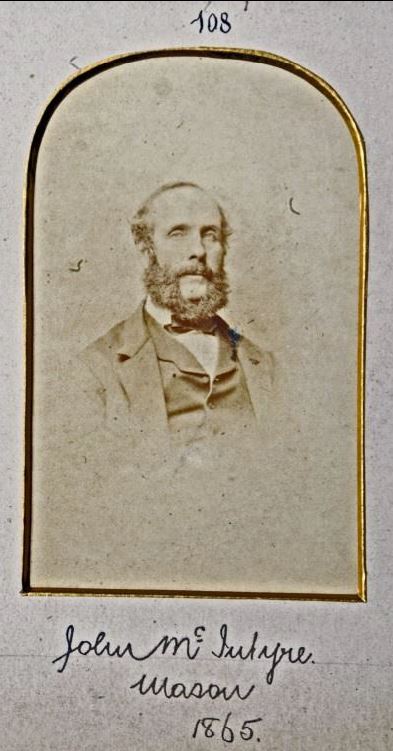
John McIntyre, Deacon of the Incorporation of Masons of Glasgow for 1865
John McIntyre was the son of Archibald McIntyre, a mason from Glenorchy. He was born in Callander in 1822, but the family then moved to Glasgow. He married Joan McLaren from Balquidder in January 1849 in Callander, two weeks after his brother George, also a mason, had married her cousin Janet McLaren.
In 1861 he was living at 253 Eglinton Street with his wife and children, and his widowed mother-in-law. By that time he was a master mason employing 24 men and 9 apprentices, and was running the nearby Lilybank brickworks.
He partnered with the quarrymaster William Stevenson in obtaining the feu of the land that would become modern Strathbungo from Sir John Maxwell of Pollok, and constructing the first terrace, 1-10 Moray Place, to the design of their architect friend, Alexander “Greek” Thomson. The cost was estimated at £5,600 . On completion Alexander moved into No. 1, and John into No. 2. He didn’t stay long however, moving c 1868 to the then new 40 (now 41) Regent Park Square round the corner.
He was the Deacon of the Incorporation of Masons of Glasgow in 1865, and their records have provided the portrait of him . He died in Callander in 1872, aged 50. He was buried in Old Cathcart Cemetery, with a Thomson designed monument.
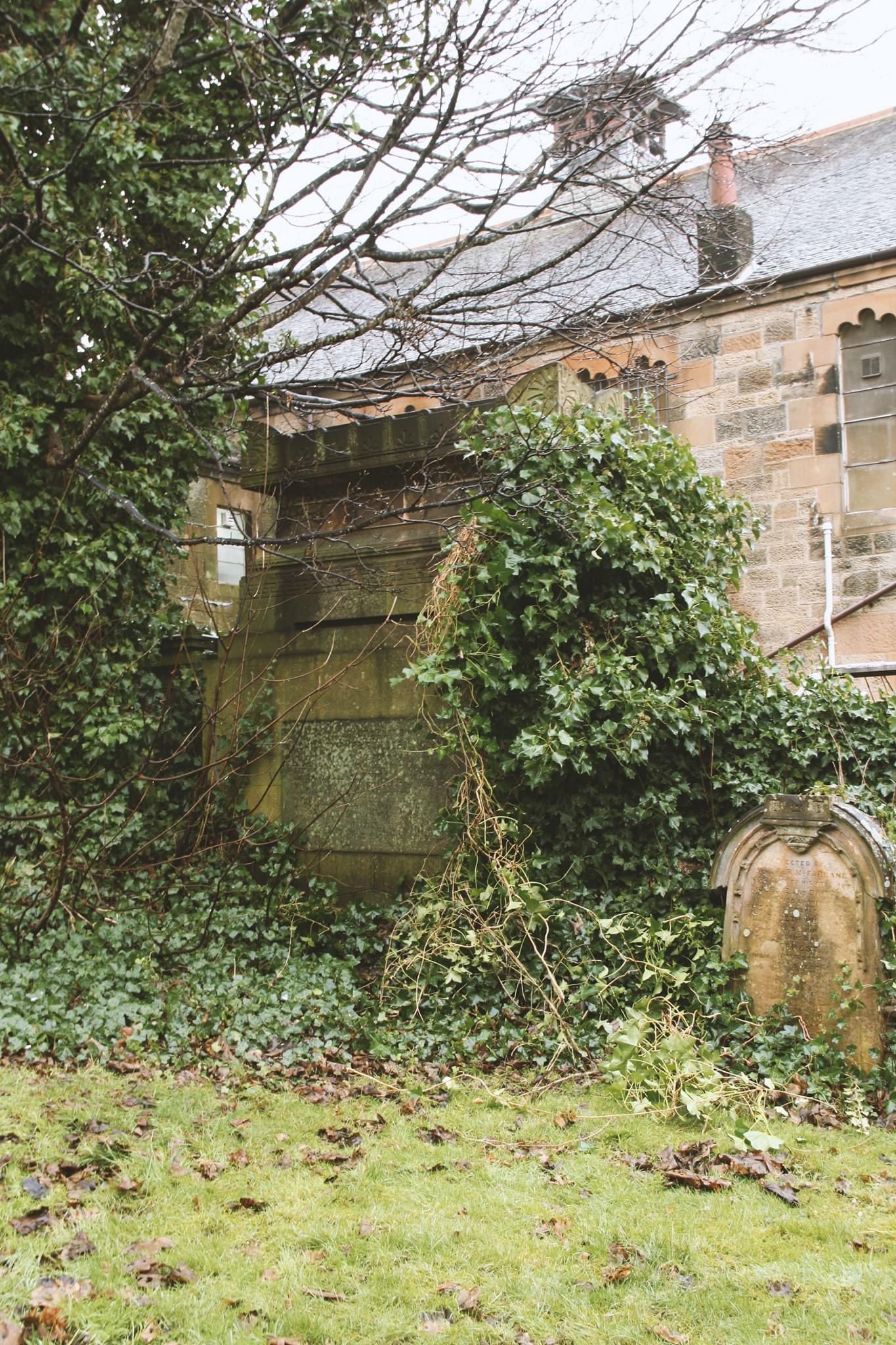
McIntyre Monument, Cathcart Cemetery. Credit: @zoeseymourarch, Twitter
See also his entry in The Builders of Strathbungo.
The McIntyre clan
His eldest son John died in Callander in 1901, but I know nothing of his life. His second son Alexander was a house factor who lived at 8 Nithsdale Road with his widowed mother, possibly managing Titwood Place. His next son George was a doctor who was on duty at the relatively new Royal Hospital for Sick Children in Garnethill on census night, 1891. He was later, I believe, a dermatologist at the Glasgow Royal Infirmary, and treasurer of the Royal Faculty (now College) of Physicians and Surgeons of Glasgow from 1918 until his death in 1922. His daughter Annie McIntyre married John Barlow, a Professor of Physiology in Glasgow, and their daughter Annie studied medicine at Glasgow, became an anaethetist at the Eye Hospital, and married a Royal Infirmary surgeon George Mowat.
John’s brother George McIntyre was also a mason, living at Charlotte Street in 1861, but he died in 1870. His sons Archibald and Robert also became masons.
His younger brother Andrew McIntyre was a builder and brickmaker, who emigrated to Victoria, Australia in the 1850s, and where some of his children were born, but he returned around 1859, and was at 265 Eglinton Street in 1861, a few doors down from John. He was living in Strathbungo at the time of the 1881 census, at 21 (now 44) Regent Park Square. He inherited the rights to build on Nithsdale Road after John’s death, and constructed Titwood Place in 1877. The tenement now houses the Titwood Bar, Merry-Go-Round, the New Anand, and others. He died in 1885 on Bute.
Andrew’s son Archibald (1851-1891) married Janet Auld (1852-1916). First Andrew, then Archibald, then Janet, then their son William Stevenson McIntyre and finally his cousin (& daughter of Archibald’s younger brother George) Mary Armour McIntyre appear to have been the owner or factor of Titwood Place; the even numbered tenement of Nithsdale Road (The Titwood Bar, etc) as these names crop up in the valuation rolls 1895-1925 for the whole terrace (they appear as MacIntyre; if you want to search for them just search “intyre”). This isn’t certain however and it is unclear why ownership would pass that way, given the numerous McIntyre descendants. The McIntyres may have been involved in the construction of Titwood Place; its architect was Robert Turnbull, Thomson’s partner, after the deaths of John McIntyre and Thomson.

Nithsdale Road, formerly Titwood Place. Credit: @PastGlasgow, Twitter
Alexander Miller, Junior
By 1868 Alexander Miller had moved in with his family. Alexander was a 35 year old calico printer warehouseman born in London, working for the firm Inglis & Wakefield. He had a patent granted in 1852 for “improvements in the treatment or finish of textile fabrics and materials”. There was a description of the firm in a trade directory of 1888 :
A very eminent name in the Scottish calico printing is that of the old and well-known house named above. Messrs. Inglis & Wakefield established themselves as calico printers over forty-eight years ago at their works at Busby, Renfrewshire, and have an office and warehouse in Glasgow and warehouses in Manchester and London ; the present Glasgow warehouse in George Square has been occupied for the past five years.
These premises comprise a large and commodious flat, handsomely appointed, arranged for office and warehouse purposes, and containing an extensive, valuable, and varied stock of the productions of the firm, which is one of the oldest and most noted in this line in the West of Scotland. The Busby print works are very extensive, and cover an area of about six acres, having a constant supply of water from the river Cart.
The mechanical equipment is commensurate with the size of the establishment and the magnitude of the trade, twenty-two improved and effective printing machines being constantly in operation ; and the working staff numbers about six hundred hands. The firm print all kinds of cotton goods, and are celebrated for the fine finish of their manufactures. Cretonnes, calicoes, and muslin goods are specialities for which an excellent reputation it enjoyed ; and all the productions of the Busby works are sold direct to the merchants from the Glasgow, Manchester, and London establishments of the house. Active enterprise and untiring energy have made this a truly great business.
The personnel of the present firm comprises Messrs. J.C. Wakefield, John Robb, C.C. Wakefield, Henry Adams, and Alexander Miller. All of these gentlemen are business men of capacity and prominence. Mr. Wakefield, sen., Mr. Charles C. Wakefield, are both magistrates for the county of Renfrew, and Mr. John Robb is magistrate for the county of Dumbarton.
Alexander Miller Senior was from Glasgow and also in the calico trade. He was working in London for the birth of Alexander and William, his eldest sons, in 1836-37, but returned to Glasgow, living in Canning Street. By 1861 he and Alexander were living at Busby House. This was a substantial building in Field Lane, on the White Cart in Busby, and was the manager’s house for the adjacent Busby Print Works, which was the main manufacturing site of Inglis and Wakefield.

The Calico Printing Works, south of Busby. OS Map Busby 1896. Credit: NLS Maps
Busby House is of particular interest. It was built in 1796. The house was extended and remodelled by Alexander Thomson in 1856-1857 for the local landowner, Durham Kippen, who rented it to Inglis & Wakefield, the proprietors of the adjacent calico printing works. Thomson’s extensions were built with locally quarried Giffnock sandstone which provided a contrast to the harled walls of the original house .
The Millers lived in the house, and so presumably became well acquainted with Thomson and his work. That wasn’t their only connection however; the firm of Inglis & Wakefield had their head office in, and were major tenants of, Thomson’s 1859 Gordon Street warehouse both before and after the devastating fire of 1864. The facade of this building survives, opposite Central Station . While Alexander Miller Senior continued to live at Busby House for at least 10 years, until retiring to Maryhill, Alexander Junior moved out and chose to live next door to Mr Thomson, at 2 Moray Place!
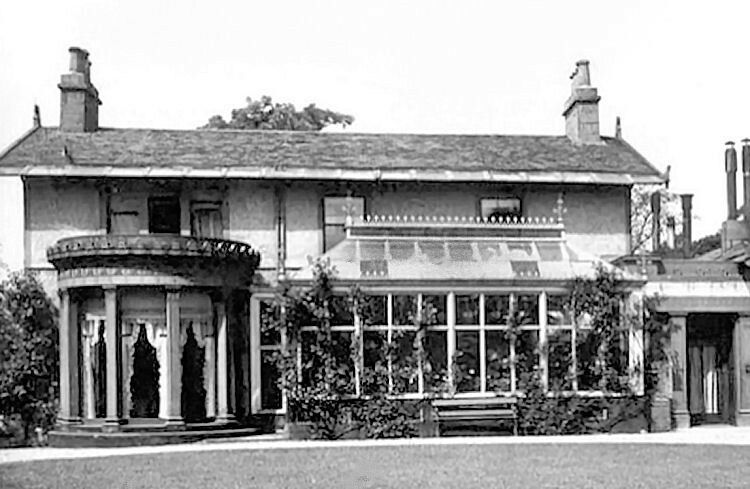
Busby House, Field Road. Alterations by Alexander Thomson. Demolished 1969. Credit: Gerald Blaikie
The Millers later moved on to addresses in Kelvinside, and at one time in Rothesay on Bute. In 1899 Inglis & Wakefield merged with many other firms into the Calico Printers Association Ltd, which later discovered Terylene.
There are no good photographs of the Busby Print Works, but one or two of the staff taken 1884. That year Thomas Donohoe (back row, right, with tash), was recruited by Platt Brothers of Salford, who made the machinery for the mill, to emigrate to Rio de Janeiro to supervise the installation of a new mill there. On arrival he organised a football team, and thus has a claim to be the man who first introduced football to Brazil .
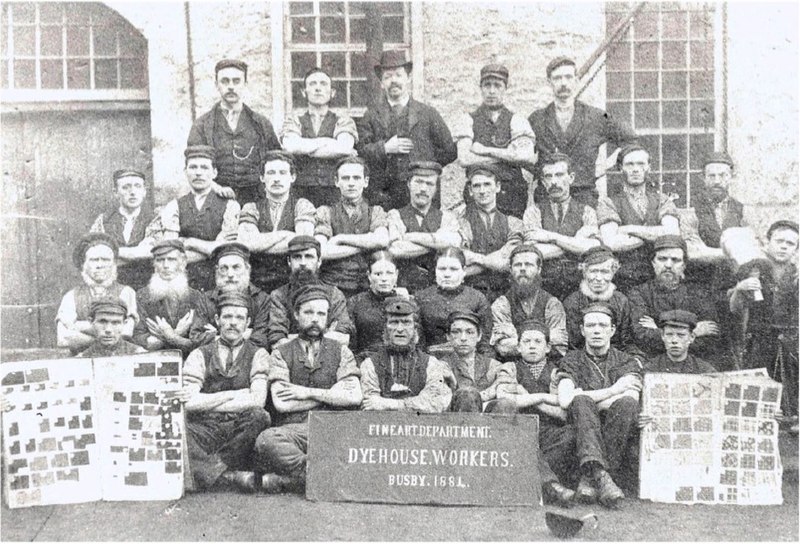
Dyehouse Workers, Busby Printworks, Inglis & Wakefield, 1884. Credit: Wikicommons

Statue of Thomas Donohoe, Bangu, Rio de Janeiro. Credit: Daily Record
Daniel Fleming
Daniel Fleming, of McIntosh & Fleming, clothiers, hosiers and shirtmakers, 104 Argyle Street, was at No. 2 around 1874-5, but by 1877 had moved to Aytoun Road.
George Walton & The Linklaters
Between approx 1877 and 1886 George Kenyon Walton of Walton Brothers owned the house. He, and his brothers James and John, were woollen waste merchants, cleaning
waste, cotton, and wooUen flock manufacturers at 38 Charlotte Lane.
However at the time of the census in 1881 he was not the occupant and must have been renting. Instead we find the Linklater family; 61 year old Robina, three children, and three grandchildren of the name Harrison. So who were these people?
Robert Linklater (1811-1874) was a draper and hosier with a shop on Commercial Street in Lerwick, Shetland. In 1839 he married Robina Thomson, and they had 10 children. Their daughter Barbara (b. 1844) married Thomas Laurence Harrison, a GP in Lerwick, and they had five children. Barbara died in 1874, and her father Robert died later the same year. Then Thomas Harrison died in 1879, and by the time his estate was sorted later in the year, Robina was at 24 Albert Drive in Crosshill, and in 1881 she was in Moray Place, with her younger children, and Barbara and Thomas’ orphaned children as well. What made her flee to Glasgow from her home in Shetland?
Her son Peter, 22, is recorded on the census as a warehouseman. He later returned to Shetland as a draper, like his father. He married in 1890, had two children, but was dead within 3 years. It is fair to say most of the Linklaters I found did not live long lives.
Robina then moved even further south with her daughter Catherine, and one of her orphaned grandchildren, Robina, to Toxteth Park in Liverpool. Catherine married John Linklater, a Shetland master mariner, who by 1894 was master of the SS Orotava, an ocean liner plying a route between Britain and Australia. Robina died in Liverpool in 1902, and John died in 1903.

RMS Orotava. Credit: Simplon Postcards, www.simplonpc.co.uk
The Linklaters’ stay in Strathbungo apppears to have been quite transient. George Watson was again resident there 1885-6.
John Cochrane Osborne
John was the son of James Osborne, a farmer at Faulds Farm, Mearns (off Dodside Road). In 1871 at the age of 31 John C was living at the farm but working as a contractor employing 100 men. By 1881 he had married Frances Herbert Osborne from Londonderry, and was living at 2 Moray Place with his wife and a young daughter Mary. The cartage business of James Osborne & Son was run out of Centre Street, Tradeston, and he may have moved in to town to be closer to the business.
On census night 1881 he had two visitors, James and Mary M Crombie. Constructing the entire Osborne family tree revealed their identities, and then some. John was the grandson of Robert Osborne of Cauldcoats Farm, also on Dodside Road. While Robert’s son James had taken on the farm opposite, Faulds Farm, where John Cochrane Osborne grew up, Robert’s younger son John had moved to Londonderry. He first married Frances Herbert, but she sadly died after giving birth to their first child, also named Frances. He then quickly married again, to Mary Callender from Leith, and had 8 further children, one of whom, Mary Marshall Osborne, married James Crombie. Meanwhile the child who survived from the first marriage was indeed the Francis Herbert Osborne from Londonderry who married John Cochrane and lived at Moray Place.
Quite a mouthful, but to summarise, John married one cousin from Londonderry, and his visitor was another cousin, but also his wife’s half-sister. Do keep up.
But who was James? Dr James Crombie was a GP, born in Melrose in 1857. He practised in Sidcup, Kent for 27 years until his death in 1918. He married Mary Osborne in Londonderry in 1890 and his first child, Mary, was born in Sidcup in August 1891. All this suggests when James and Mary were staying at Moray Place on census night, 6th April 1891, she was several months pregnant and they were preparing to move south to their new life in Kent.
James lost two of his three sons in the Great War, and this was said to have contributed to his own death. His third son, unwell from tropical disease related to his own military service, succumbed to the influenza pandemic the following year .
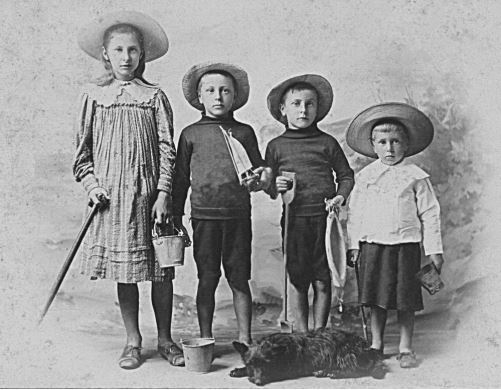
Dr Crombie’s children. Credit: Philip Wilson
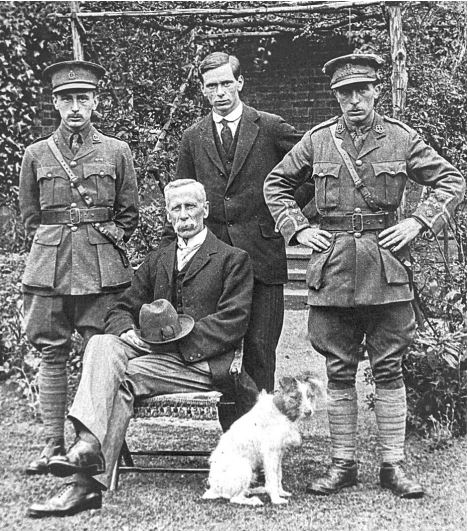
Dr Crombie and his sons, Ian, James and William (L-R). Credit: Philip Wilson
The Osbornes in the 1901 census
In 1901 Mary is not home, but there are two more children, Herbert (1891-1984) and Christina (1899-1989); another, Frances, had died in infancy. Again he has mysterious guests; Christina Strang, 48, from Mearns, and two children Annie A and Marjory J Strang, one born in England, one in America.
Christina was John’s younger sister, and twin to Alexander, born January 1853. She married James Strang, and died in Glendale, Los Angeles in 1954, having reached the age of 101. Overall the Osborne genes were much better than those of the Linklaters.

Christina Strang on her 100th birthday. Credit: Kathleen Ford, Ancestry.com
Osbornes in the 20th century
Subsequently the valuation rolls show John to still be in residence until at least 1925. He died in Newton Mearns in 1936. His daughter Mary Eileen trained as a nurse, first in Edinburgh, then at the Victoria Infirmary, and later became a midwife. She was still at 2 Moray Place in 1926, possibly 1932, according to the Scottish Midwife Register. Her nursing registration application in 1924 was witnessed by one James Stevenson Kilpatrick, an electrical engineer who married her sister Christina Winifred Osborne. His grandfather was also James Stevenson Kilpatrick, a Paisley plumber who diversified into the new field of electricity, and James’ father, John Kilpatrick took the company to become one of Scotland’s major 20th century electrical engineering firms. Jobs included powering mills around the world, and lighting the Empire Exhibition of 1938 in Bellahouston Park, which used as much electricity as half of Paisley. The name lives on as Balfour Beatty Kilpatrick .
George Thomson
George was resident at Moray Place circa 1939-1941. He was an accountant at the Royal Bank of Scotland in Glasgow.
References
{3557955:667X3CK2};{3557955:YK3F4V5R};{3557955:QSQBABEX};{3557955:S46T8C2L};{3557955:KCMSM95N};{3557955:3N53WLR3},{3557955:S5LGR8BJ};{3557955:KIG267BD};{3557955:T2MXL28Q}
vancouver
asc
0
3191
%7B%22status%22%3A%22success%22%2C%22updateneeded%22%3Afalse%2C%22instance%22%3A%22zotpress-ec7ffe390fec2d2baf05ab8187f233b4%22%2C%22meta%22%3A%7B%22request_last%22%3A0%2C%22request_next%22%3A0%2C%22used_cache%22%3Atrue%7D%2C%22data%22%3A%5B%7B%22key%22%3A%22S5LGR8BJ%22%2C%22library%22%3A%7B%22id%22%3A3557955%7D%2C%22meta%22%3A%7B%22creatorSummary%22%3A%22McGivern%22%2C%22parsedDate%22%3A%222014-06-28%22%2C%22numChildren%22%3A1%7D%2C%22bib%22%3A%22%3Cdiv%20class%3D%5C%22csl-bib-body%5C%22%20style%3D%5C%22line-height%3A%201.35%3B%20%5C%22%3E%5Cn%20%20%3Cdiv%20class%3D%5C%22csl-entry%5C%22%20style%3D%5C%22clear%3A%20left%3B%20%5C%22%3E%5Cn%20%20%20%20%3Cdiv%20class%3D%5C%22csl-left-margin%5C%22%20style%3D%5C%22float%3A%20left%3B%20padding-right%3A%200.5em%3B%20text-align%3A%20right%3B%20width%3A%201em%3B%5C%22%3E1.%3C%5C%2Fdiv%3E%3Cdiv%20class%3D%5C%22csl-right-inline%5C%22%20style%3D%5C%22margin%3A%200%20.4em%200%201.5em%3B%5C%22%3EMcGivern%20M.%20Daily%20Record.%202014%20%5Bcited%202022%20Jan%207%5D.%20Scot%20football%20legends%20go%20head%20to%20head%20to%20decide%20which%20man%20brought%20the%20beautiful%20game%20to%20Brazil.%20Available%20from%3A%20%3Ca%20href%3D%27http%3A%5C%2F%5C%2Fwww.dailyrecord.co.uk%5C%2Fnews%5C%2Fscottish-news%5C%2Fscot-football-legends-go-head-3779378%27%3Ehttp%3A%5C%2F%5C%2Fwww.dailyrecord.co.uk%5C%2Fnews%5C%2Fscottish-news%5C%2Fscot-football-legends-go-head-3779378%3C%5C%2Fa%3E%3C%5C%2Fdiv%3E%5Cn%20%20%3C%5C%2Fdiv%3E%5Cn%3C%5C%2Fdiv%3E%22%2C%22data%22%3A%7B%22itemType%22%3A%22webpage%22%2C%22title%22%3A%22Scot%20football%20legends%20go%20head%20to%20head%20to%20decide%20which%20man%20brought%20the%20beautiful%20game%20to%20Brazil%22%2C%22creators%22%3A%5B%7B%22creatorType%22%3A%22author%22%2C%22firstName%22%3A%22Mark%22%2C%22lastName%22%3A%22McGivern%22%7D%5D%2C%22abstractNote%22%3A%22SCOTTISH%20pioneers%20are%20responsible%20for%20bringing%20the%20game%20of%20football%20to%20the%20Brazilians%20but%20who%20should%20get%20the%20credit%3F%20Charles%20Miller%20or%20Thomas%20Donohoe%3F%22%2C%22date%22%3A%222014-06-28T11%3A14%3A26Z%22%2C%22url%22%3A%22http%3A%5C%2F%5C%2Fwww.dailyrecord.co.uk%5C%2Fnews%5C%2Fscottish-news%5C%2Fscot-football-legends-go-head-3779378%22%2C%22language%22%3A%22en%22%2C%22collections%22%3A%5B%22CAR6MXPM%22%5D%2C%22dateModified%22%3A%222022-01-07T19%3A27%3A04Z%22%7D%7D%2C%7B%22key%22%3A%223N53WLR3%22%2C%22library%22%3A%7B%22id%22%3A3557955%7D%2C%22meta%22%3A%7B%22parsedDate%22%3A%222021-11-14%22%2C%22numChildren%22%3A1%7D%2C%22bib%22%3A%22%3Cdiv%20class%3D%5C%22csl-bib-body%5C%22%20style%3D%5C%22line-height%3A%201.35%3B%20%5C%22%3E%5Cn%20%20%3Cdiv%20class%3D%5C%22csl-entry%5C%22%20style%3D%5C%22clear%3A%20left%3B%20%5C%22%3E%5Cn%20%20%20%20%3Cdiv%20class%3D%5C%22csl-left-margin%5C%22%20style%3D%5C%22float%3A%20left%3B%20padding-right%3A%200.5em%3B%20text-align%3A%20right%3B%20width%3A%201em%3B%5C%22%3E1.%3C%5C%2Fdiv%3E%3Cdiv%20class%3D%5C%22csl-right-inline%5C%22%20style%3D%5C%22margin%3A%200%20.4em%200%201.5em%3B%5C%22%3EThomas%20Donohoe.%20In%3A%20Wikipedia%20%5BInternet%5D.%202021%20%5Bcited%202022%20Jan%207%5D.%20Available%20from%3A%20%3Ca%20href%3D%27https%3A%5C%2F%5C%2Fen.wikipedia.org%5C%2Fw%5C%2Findex.php%3Ftitle%3DThomas_Donohoe%26oldid%3D1055126284%27%3Ehttps%3A%5C%2F%5C%2Fen.wikipedia.org%5C%2Fw%5C%2Findex.php%3Ftitle%3DThomas_Donohoe%26oldid%3D1055126284%3C%5C%2Fa%3E%3C%5C%2Fdiv%3E%5Cn%20%20%3C%5C%2Fdiv%3E%5Cn%3C%5C%2Fdiv%3E%22%2C%22data%22%3A%7B%22itemType%22%3A%22encyclopediaArticle%22%2C%22title%22%3A%22Thomas%20Donohoe%22%2C%22creators%22%3A%5B%5D%2C%22abstractNote%22%3A%22Thomas%20Donohoe%20was%20a%20master%20dyer%20in%20the%20calico%20printing%20industry.%20Thomas%20emigrated%20to%20Brazil%20in%201894%20and%20played%20football%20matches%20in%20Bangu%20%28now%20a%20suburb%20of%20Rio%20de%20Janeiro%29%20that%20year%20with%20fellow%20employees%20of%20the%20textile%20company%20Progresso%20Industrial%20Do%20Brazil.%5CnCharles%20Miller%2C%20who%20some%20others%20claim%20to%20have%20brought%20football%20to%20Brazil%2C%20organized%20his%20first%20match%20in%20April%20of%20the%20following%20year%20in%20S%5Cu00e3o%20Paulo.%5CnA%20monument%2C%20in%20Donohoe%5Cu2019s%20hometown%20of%20Busby%2C%20East%20Renfrewshire%2C%20is%20in%20the%20planning%20stages.%20Paul%20O%27Kane%20M.S.P.%20raised%20awareness%20of%20the%20project%20by%20submitting%20a%20motion%20to%20the%20Scottish%20Parliament.%20The%20sculpture%2C%20to%20be%20designed%20and%20created%20by%20Kate%20Robinson%2C%20will%20be%20located%20in%20the%20Mary%20Young%20car%20park%20%28at%20the%20corner%20of%20Main%20Street%20and%20Riverside%20Terrace%29.%22%2C%22encyclopediaTitle%22%3A%22Wikipedia%22%2C%22date%22%3A%222021-11-14T01%3A24%3A25Z%22%2C%22ISBN%22%3A%22%22%2C%22url%22%3A%22https%3A%5C%2F%5C%2Fen.wikipedia.org%5C%2Fw%5C%2Findex.php%3Ftitle%3DThomas_Donohoe%26oldid%3D1055126284%22%2C%22language%22%3A%22en%22%2C%22collections%22%3A%5B%22CAR6MXPM%22%5D%2C%22dateModified%22%3A%222022-01-07T19%3A20%3A50Z%22%7D%7D%2C%7B%22key%22%3A%22KIG267BD%22%2C%22library%22%3A%7B%22id%22%3A3557955%7D%2C%22meta%22%3A%7B%22creatorSummary%22%3A%22Wilson%22%2C%22parsedDate%22%3A%222017-11%22%2C%22numChildren%22%3A0%7D%2C%22bib%22%3A%22%3Cdiv%20class%3D%5C%22csl-bib-body%5C%22%20style%3D%5C%22line-height%3A%201.35%3B%20%5C%22%3E%5Cn%20%20%3Cdiv%20class%3D%5C%22csl-entry%5C%22%20style%3D%5C%22clear%3A%20left%3B%20%5C%22%3E%5Cn%20%20%20%20%3Cdiv%20class%3D%5C%22csl-left-margin%5C%22%20style%3D%5C%22float%3A%20left%3B%20padding-right%3A%200.5em%3B%20text-align%3A%20right%3B%20width%3A%201em%3B%5C%22%3E1.%3C%5C%2Fdiv%3E%3Cdiv%20class%3D%5C%22csl-right-inline%5C%22%20style%3D%5C%22margin%3A%200%20.4em%200%201.5em%3B%5C%22%3EWilson%20P.%20Dr%20Crombie%20and%20his%20Family.%20The%20Outlook%20-%20Emmanuel%20Church%20Sidcup%20%5BInternet%5D.%202017%20%5Bcited%202022%20Jan%207%5D.%20Available%20from%3A%20%3Ca%20href%3D%27https%3A%5C%2F%5C%2Fwww.emmanuelchurchsidcup.org.uk%5C%2Fassets%5C%2Fapplets%5C%2Foutlook-sep-nov17-web.pdf%27%3Ehttps%3A%5C%2F%5C%2Fwww.emmanuelchurchsidcup.org.uk%5C%2Fassets%5C%2Fapplets%5C%2Foutlook-sep-nov17-web.pdf%3C%5C%2Fa%3E%3C%5C%2Fdiv%3E%5Cn%20%20%3C%5C%2Fdiv%3E%5Cn%3C%5C%2Fdiv%3E%22%2C%22data%22%3A%7B%22itemType%22%3A%22document%22%2C%22title%22%3A%22Dr%20Crombie%20and%20his%20Family.%20The%20Outlook%20-%20Emmanuel%20Church%20Sidcup%22%2C%22creators%22%3A%5B%7B%22creatorType%22%3A%22author%22%2C%22firstName%22%3A%22Philip%22%2C%22lastName%22%3A%22Wilson%22%7D%5D%2C%22abstractNote%22%3A%22%22%2C%22date%22%3A%22Sep-Nov%202017%22%2C%22language%22%3A%22%22%2C%22url%22%3A%22https%3A%5C%2F%5C%2Fwww.emmanuelchurchsidcup.org.uk%5C%2Fassets%5C%2Fapplets%5C%2Foutlook-sep-nov17-web.pdf%22%2C%22collections%22%3A%5B%22CAR6MXPM%22%5D%2C%22dateModified%22%3A%222022-01-07T19%3A20%3A50Z%22%7D%7D%2C%7B%22key%22%3A%22667X3CK2%22%2C%22library%22%3A%7B%22id%22%3A3557955%7D%2C%22meta%22%3A%7B%22numChildren%22%3A1%7D%2C%22bib%22%3A%22%3Cdiv%20class%3D%5C%22csl-bib-body%5C%22%20style%3D%5C%22line-height%3A%201.35%3B%20%5C%22%3E%5Cn%20%20%3Cdiv%20class%3D%5C%22csl-entry%5C%22%20style%3D%5C%22clear%3A%20left%3B%20%5C%22%3E%5Cn%20%20%20%20%3Cdiv%20class%3D%5C%22csl-left-margin%5C%22%20style%3D%5C%22float%3A%20left%3B%20padding-right%3A%200.5em%3B%20text-align%3A%20right%3B%20width%3A%201em%3B%5C%22%3E1.%3C%5C%2Fdiv%3E%3Cdiv%20class%3D%5C%22csl-right-inline%5C%22%20style%3D%5C%22margin%3A%200%20.4em%200%201.5em%3B%5C%22%3ETerrace%20of%20houses%2C%201-10%20Moray%20Place%20%5BInternet%5D.%20%5Bcited%202022%20Jan%207%5D.%20Available%20from%3A%20%3Ca%20href%3D%27http%3A%5C%2F%5C%2Fwww.scottisharchitects.org.uk%5C%2Fbuilding_full.php%3Fid%3D214143%27%3Ehttp%3A%5C%2F%5C%2Fwww.scottisharchitects.org.uk%5C%2Fbuilding_full.php%3Fid%3D214143%3C%5C%2Fa%3E%3C%5C%2Fdiv%3E%5Cn%20%20%3C%5C%2Fdiv%3E%5Cn%3C%5C%2Fdiv%3E%22%2C%22data%22%3A%7B%22itemType%22%3A%22webpage%22%2C%22title%22%3A%22Terrace%20of%20houses%2C%201-10%20Moray%20Place%22%2C%22creators%22%3A%5B%5D%2C%22abstractNote%22%3A%22%22%2C%22date%22%3A%22%22%2C%22url%22%3A%22http%3A%5C%2F%5C%2Fwww.scottisharchitects.org.uk%5C%2Fbuilding_full.php%3Fid%3D214143%22%2C%22language%22%3A%22%22%2C%22collections%22%3A%5B%22CAR6MXPM%22%5D%2C%22dateModified%22%3A%222022-01-07T15%3A20%3A43Z%22%7D%7D%2C%7B%22key%22%3A%22S46T8C2L%22%2C%22library%22%3A%7B%22id%22%3A3557955%7D%2C%22meta%22%3A%7B%22numChildren%22%3A1%7D%2C%22bib%22%3A%22%3Cdiv%20class%3D%5C%22csl-bib-body%5C%22%20style%3D%5C%22line-height%3A%201.35%3B%20%5C%22%3E%5Cn%20%20%3Cdiv%20class%3D%5C%22csl-entry%5C%22%20style%3D%5C%22clear%3A%20left%3B%20%5C%22%3E%5Cn%20%20%20%20%3Cdiv%20class%3D%5C%22csl-left-margin%5C%22%20style%3D%5C%22float%3A%20left%3B%20padding-right%3A%200.5em%3B%20text-align%3A%20right%3B%20width%3A%201em%3B%5C%22%3E1.%3C%5C%2Fdiv%3E%3Cdiv%20class%3D%5C%22csl-right-inline%5C%22%20style%3D%5C%22margin%3A%200%20.4em%200%201.5em%3B%5C%22%3EBusby%20and%20Waterfoot%26%23x202F%3B%3A%20Origins%20and%20History%20%5BInternet%5D.%20%5Bcited%202022%20Jan%207%5D.%20Available%20from%3A%20%3Ca%20href%3D%27http%3A%5C%2F%5C%2Fwww.gerryblaikie.com%5C%2Fsouthglasgow%5C%2Fbusby.htm%27%3Ehttp%3A%5C%2F%5C%2Fwww.gerryblaikie.com%5C%2Fsouthglasgow%5C%2Fbusby.htm%3C%5C%2Fa%3E%3C%5C%2Fdiv%3E%5Cn%20%20%3C%5C%2Fdiv%3E%5Cn%3C%5C%2Fdiv%3E%22%2C%22data%22%3A%7B%22itemType%22%3A%22webpage%22%2C%22title%22%3A%22Busby%20and%20Waterfoot%20%3A%20Origins%20and%20History%22%2C%22creators%22%3A%5B%5D%2C%22abstractNote%22%3A%22%22%2C%22date%22%3A%22%22%2C%22url%22%3A%22http%3A%5C%2F%5C%2Fwww.gerryblaikie.com%5C%2Fsouthglasgow%5C%2Fbusby.htm%22%2C%22language%22%3A%22%22%2C%22collections%22%3A%5B%22CAR6MXPM%22%5D%2C%22dateModified%22%3A%222022-01-07T15%3A03%3A46Z%22%7D%7D%2C%7B%22key%22%3A%22YK3F4V5R%22%2C%22library%22%3A%7B%22id%22%3A3557955%7D%2C%22meta%22%3A%7B%22numChildren%22%3A1%7D%2C%22bib%22%3A%22%3Cdiv%20class%3D%5C%22csl-bib-body%5C%22%20style%3D%5C%22line-height%3A%201.35%3B%20%5C%22%3E%5Cn%20%20%3Cdiv%20class%3D%5C%22csl-entry%5C%22%20style%3D%5C%22clear%3A%20left%3B%20%5C%22%3E%5Cn%20%20%20%20%3Cdiv%20class%3D%5C%22csl-left-margin%5C%22%20style%3D%5C%22float%3A%20left%3B%20padding-right%3A%200.5em%3B%20text-align%3A%20right%3B%20width%3A%201em%3B%5C%22%3E1.%3C%5C%2Fdiv%3E%3Cdiv%20class%3D%5C%22csl-right-inline%5C%22%20style%3D%5C%22margin%3A%200%20.4em%200%201.5em%3B%5C%22%3EIncorporation%20of%20Masons%20of%20Glasgow%3A%20Supporting%20Stonemasonry%20and%20Allied%20Trades%20%5BInternet%5D.%20%5Bcited%202022%20Jan%207%5D.%20Incorporation%20of%20Masons%20of%20Glasgow%3A%20Supporting%20Stonemasonry%20and%20Allied%20Trades.%20Available%20from%3A%20%3Ca%20href%3D%27https%3A%5C%2F%5C%2Fwww.IncorporationofMasonsofGlasgow.org%5C%2F%27%3Ehttps%3A%5C%2F%5C%2Fwww.IncorporationofMasonsofGlasgow.org%5C%2F%3C%5C%2Fa%3E%3C%5C%2Fdiv%3E%5Cn%20%20%3C%5C%2Fdiv%3E%5Cn%3C%5C%2Fdiv%3E%22%2C%22data%22%3A%7B%22itemType%22%3A%22webpage%22%2C%22title%22%3A%22Incorporation%20of%20Masons%20of%20Glasgow%3A%20Supporting%20Stonemasonry%20and%20Allied%20Trades%22%2C%22creators%22%3A%5B%5D%2C%22abstractNote%22%3A%22Incorporatgion%20of%20Masons%20of%20Glasgow%20website%22%2C%22date%22%3A%22%22%2C%22url%22%3A%22https%3A%5C%2F%5C%2Fwww.IncorporationofMasonsofGlasgow.org%5C%2F%22%2C%22language%22%3A%22en%22%2C%22collections%22%3A%5B%22CAR6MXPM%22%5D%2C%22dateModified%22%3A%222022-01-07T14%3A05%3A35Z%22%7D%7D%2C%7B%22key%22%3A%22T2MXL28Q%22%2C%22library%22%3A%7B%22id%22%3A3557955%7D%2C%22meta%22%3A%7B%22numChildren%22%3A1%7D%2C%22bib%22%3A%22%3Cdiv%20class%3D%5C%22csl-bib-body%5C%22%20style%3D%5C%22line-height%3A%201.35%3B%20%5C%22%3E%5Cn%20%20%3Cdiv%20class%3D%5C%22csl-entry%5C%22%20style%3D%5C%22clear%3A%20left%3B%20%5C%22%3E%5Cn%20%20%20%20%3Cdiv%20class%3D%5C%22csl-left-margin%5C%22%20style%3D%5C%22float%3A%20left%3B%20padding-right%3A%200.5em%3B%20text-align%3A%20right%3B%20width%3A%201em%3B%5C%22%3E1.%3C%5C%2Fdiv%3E%3Cdiv%20class%3D%5C%22csl-right-inline%5C%22%20style%3D%5C%22margin%3A%200%20.4em%200%201.5em%3B%5C%22%3EHeraldScotland%20%5BInternet%5D.%20%5Bcited%202022%20Jan%207%5D.%20Modest%20venture%20which%20grew%20to%20span%20the%20world.%20Available%20from%3A%20%3Ca%20href%3D%27https%3A%5C%2F%5C%2Fwww.heraldscotland.com%5C%2Fnews%5C%2F12654896.modest-venture-which-grew-to-span-the-world%5C%2F%27%3Ehttps%3A%5C%2F%5C%2Fwww.heraldscotland.com%5C%2Fnews%5C%2F12654896.modest-venture-which-grew-to-span-the-world%5C%2F%3C%5C%2Fa%3E%3C%5C%2Fdiv%3E%5Cn%20%20%3C%5C%2Fdiv%3E%5Cn%3C%5C%2Fdiv%3E%22%2C%22data%22%3A%7B%22itemType%22%3A%22webpage%22%2C%22title%22%3A%22Modest%20venture%20which%20grew%20to%20span%20the%20world%22%2C%22creators%22%3A%5B%5D%2C%22abstractNote%22%3A%22THE%20Balfour%20Kilpatrick%20name%20first%20appeared%20in%201971.%20That%20was%20just%20two%22%2C%22date%22%3A%22%22%2C%22url%22%3A%22https%3A%5C%2F%5C%2Fwww.heraldscotland.com%5C%2Fnews%5C%2F12654896.modest-venture-which-grew-to-span-the-world%5C%2F%22%2C%22language%22%3A%22en%22%2C%22collections%22%3A%5B%22CAR6MXPM%22%5D%2C%22dateModified%22%3A%222022-01-07T12%3A54%3A22Z%22%7D%7D%2C%7B%22key%22%3A%22QSQBABEX%22%2C%22library%22%3A%7B%22id%22%3A3557955%7D%2C%22meta%22%3A%7B%22numChildren%22%3A1%7D%2C%22bib%22%3A%22%3Cdiv%20class%3D%5C%22csl-bib-body%5C%22%20style%3D%5C%22line-height%3A%201.35%3B%20%5C%22%3E%5Cn%20%20%3Cdiv%20class%3D%5C%22csl-entry%5C%22%20style%3D%5C%22clear%3A%20left%3B%20%5C%22%3E%5Cn%20%20%20%20%3Cdiv%20class%3D%5C%22csl-left-margin%5C%22%20style%3D%5C%22float%3A%20left%3B%20padding-right%3A%200.5em%3B%20text-align%3A%20right%3B%20width%3A%201em%3B%5C%22%3E1.%3C%5C%2Fdiv%3E%3Cdiv%20class%3D%5C%22csl-right-inline%5C%22%20style%3D%5C%22margin%3A%200%20.4em%200%201.5em%3B%5C%22%3EInglis%20%26amp%3B%20Wakefield%20%5BInternet%5D.%20%5Bcited%202022%20Jan%206%5D.%20Available%20from%3A%20%3Ca%20href%3D%27http%3A%5C%2F%5C%2Fwww.glasgowwestaddress.co.uk%5C%2F1888_Book%5C%2FInglis%2520%26%2520Wakefield.htm%27%3Ehttp%3A%5C%2F%5C%2Fwww.glasgowwestaddress.co.uk%5C%2F1888_Book%5C%2FInglis%2520%26%2520Wakefield.htm%3C%5C%2Fa%3E%3C%5C%2Fdiv%3E%5Cn%20%20%3C%5C%2Fdiv%3E%5Cn%3C%5C%2Fdiv%3E%22%2C%22data%22%3A%7B%22itemType%22%3A%22webpage%22%2C%22title%22%3A%22Inglis%20%26%20Wakefield%22%2C%22creators%22%3A%5B%5D%2C%22abstractNote%22%3A%22%22%2C%22date%22%3A%22%22%2C%22url%22%3A%22http%3A%5C%2F%5C%2Fwww.glasgowwestaddress.co.uk%5C%2F1888_Book%5C%2FInglis%2520%26%2520Wakefield.htm%22%2C%22language%22%3A%22%22%2C%22collections%22%3A%5B%22CAR6MXPM%22%5D%2C%22dateModified%22%3A%222022-01-06T23%3A15%3A09Z%22%7D%7D%2C%7B%22key%22%3A%22KCMSM95N%22%2C%22library%22%3A%7B%22id%22%3A3557955%7D%2C%22meta%22%3A%7B%22creatorSummary%22%3A%22Stamp%22%2C%22parsedDate%22%3A%221999%22%2C%22numChildren%22%3A0%7D%2C%22bib%22%3A%22%3Cdiv%20class%3D%5C%22csl-bib-body%5C%22%20style%3D%5C%22line-height%3A%201.35%3B%20%5C%22%3E%5Cn%20%20%3Cdiv%20class%3D%5C%22csl-entry%5C%22%20style%3D%5C%22clear%3A%20left%3B%20%5C%22%3E%5Cn%20%20%20%20%3Cdiv%20class%3D%5C%22csl-left-margin%5C%22%20style%3D%5C%22float%3A%20left%3B%20padding-right%3A%200.5em%3B%20text-align%3A%20right%3B%20width%3A%201em%3B%5C%22%3E1.%3C%5C%2Fdiv%3E%3Cdiv%20class%3D%5C%22csl-right-inline%5C%22%20style%3D%5C%22margin%3A%200%20.4em%200%201.5em%3B%5C%22%3EStamp%20G.%20Alexander%20%26%23x201C%3BGreek%26%23x201D%3B%20Thomson.%20Laurence%20King%3B%201999.%20176%20p.%3C%5C%2Fdiv%3E%5Cn%20%20%20%3C%5C%2Fdiv%3E%5Cn%3C%5C%2Fdiv%3E%22%2C%22data%22%3A%7B%22itemType%22%3A%22book%22%2C%22title%22%3A%22Alexander%20%5C%22Greek%5C%22%20Thomson%22%2C%22creators%22%3A%5B%7B%22creatorType%22%3A%22author%22%2C%22firstName%22%3A%22Gavin%22%2C%22lastName%22%3A%22Stamp%22%7D%5D%2C%22abstractNote%22%3A%22%22%2C%22date%22%3A%221999%22%2C%22language%22%3A%22%22%2C%22ISBN%22%3A%22978-1-85669-161-1%22%2C%22url%22%3A%22%22%2C%22collections%22%3A%5B%22CAR6MXPM%22%5D%2C%22dateModified%22%3A%222016-12-22T22%3A21%3A47Z%22%7D%7D%5D%7D
1.
Incorporation of Masons of Glasgow: Supporting Stonemasonry and Allied Trades [Internet]. [cited 2022 Jan 7]. Incorporation of Masons of Glasgow: Supporting Stonemasonry and Allied Trades. Available from:
https://www.IncorporationofMasonsofGlasgow.org/
1.
Stamp G. Alexander “Greek” Thomson. Laurence King; 1999. 176 p.
Like this:
Like Loading...

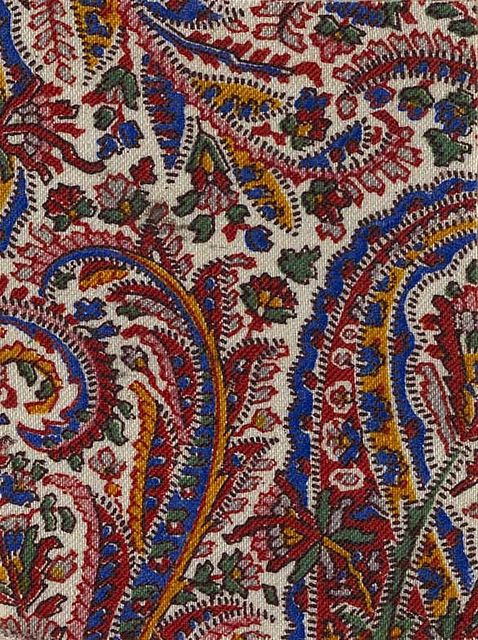











January 15, 2022 at 10:38 am
Updated: Added another connection between the Millers and Thomson; Inglis & Wakefield were the major tenants of Thomson’s Gordon Street warehouse opposite Central Station.